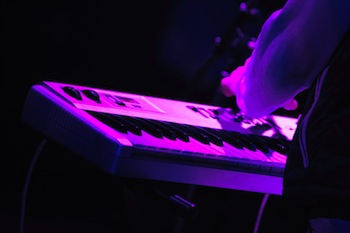Like a TV show with a plot line twist, a musical surprise (carefully used) can be very exciting.
____________
Purchase “The Essential Secrets of Songwriting” 6-eBook Bundle, and get this eBook FREE OF CHARGE: “From Amateur to Ace: Writing Songs Like a Pro”.
_____________
 Picture it – you’re watching a movie, and just as your attention is starting to wander a bit, the writers throw a curveball at you – an unexpected surprise, like reintroducing a character you thought was dead, or some other bizarre plot twist. It’s moments like that that can suddenly make you feel excited and “back in it.”
Picture it – you’re watching a movie, and just as your attention is starting to wander a bit, the writers throw a curveball at you – an unexpected surprise, like reintroducing a character you thought was dead, or some other bizarre plot twist. It’s moments like that that can suddenly make you feel excited and “back in it.”
Done with some care and discretion, musical surprises can excite your audience, as long as the surprise isn’t cheesy, trite, or done too often.
Sometimes the musical surprise can be as simple as a tempo change at the bridge, such as with Lionel Ritchie’s “Say You, Say Me.” At other times, it could be weird juxtapositions of styles along with unique formal designs, such as with Queen’s “Bohemian Rhapsody.”
If you think your music is lacking something that sets it apart from other songs, and you want a touch of something special, here’s a short list of 7 musical surprises to try:
- Use a non-standard instrumentation. Every genre of music has its typical instrumentation, so try changing things up a bit. Visit a music school at your local university and find a student who can score music for string quartet, brass ensemble, or some other non-standard grouping.
- Use a non-standard time signature. In pop music genres, 4/4 time is by far the most common. So try 3/4 as a starter, or even a complex meter such as 5/8 or 7/8. To make this easy, try taking a song you’ve written in 4/4 and shorten the last beat by one 8th-note. That gives you 7/8.
- Use “melded cadences”. A cadence simply means the end of a musical phrase. A melded cadence means that the end of one phrase is the start of the next. So for example, if your chorus ends on a I-chord and your bridge also starts on that same I-chord, try making the end of the chorus be the start of the bridge by eliminating one bar.
- Use a “deceptive cadence.” A deceptive cadence is the ending of a phrase of music on a chord that wasn’t expected. For example, instead of C F G7 C, you can go in an entirely different direction by ending on something unexpected like C F G7 Ab.
- Throw in an unaccompanied vocal section in the middle. It can be a great surprise to suddenly have all instruments stop on a final chorus while the vocal keeps going. Then bring the instruments back in for a final repeat.
- Change Key. Changing the key of your music in the second half of your song is a bit predictable, but there are other options that are a bit more surprising. For example, downward key changes are not that common, but can generate energy if the melody is moving upward at the same time. (C F G C F7 Bb)
- Throw in an unaccompanied solo. Solos in pop music are common, but having a guitar, bass or drums play a solo while everything else stops is more surprising. This doesn’t need to go on for long – 2-4 bars is generally enough. Think of the drum solo in The Beatles’ “The End” from their Abbey Road album as a good model here.
Remember that once a surprise is used, it’s less of a surprise if you use it again, so be judicious about how you toss them into your music. Most good music is a mixture of predictable and innovative elements, with the balance most heavily toward predictable.
______________
 Written by Gary Ewer. Follow on Twitter.
Written by Gary Ewer. Follow on Twitter.
Download “The Essential Secrets of Songwriting” 6-eBook Bundle: $95.70 $37.00 (and get a copy of “From Amateur to Ace: Writing Songs Like a Pro” FREE.)









